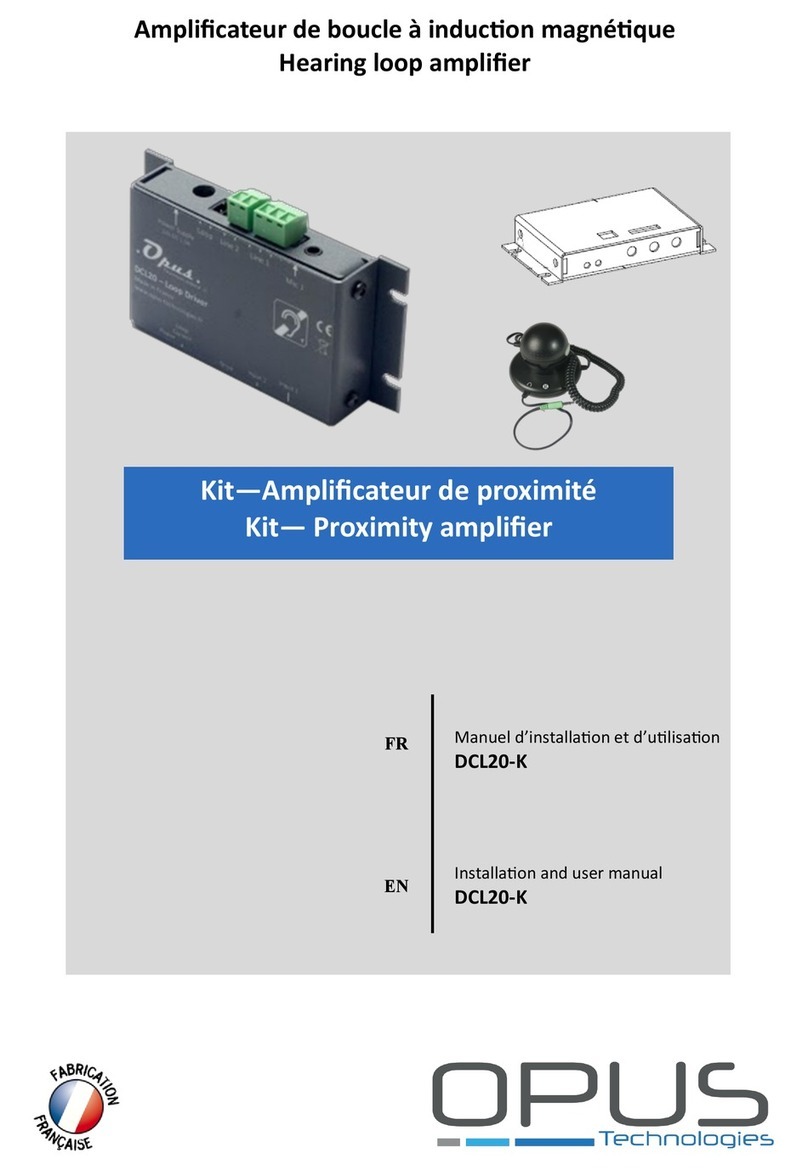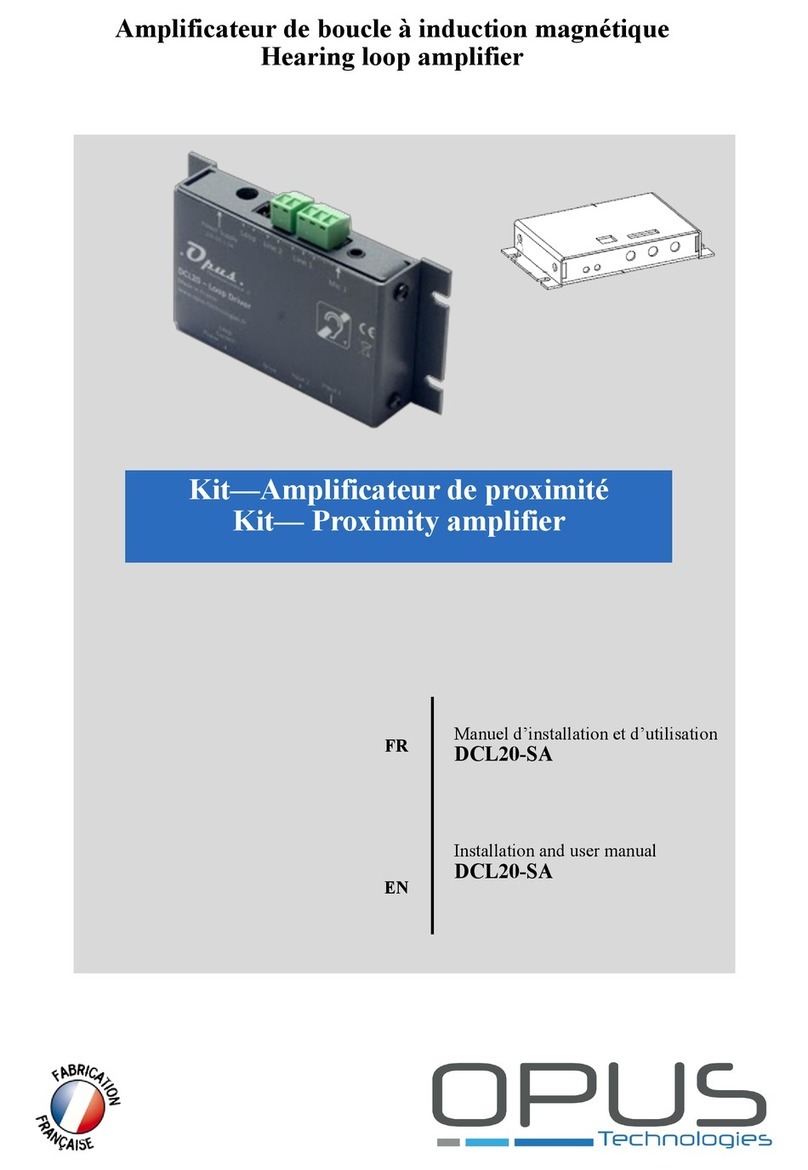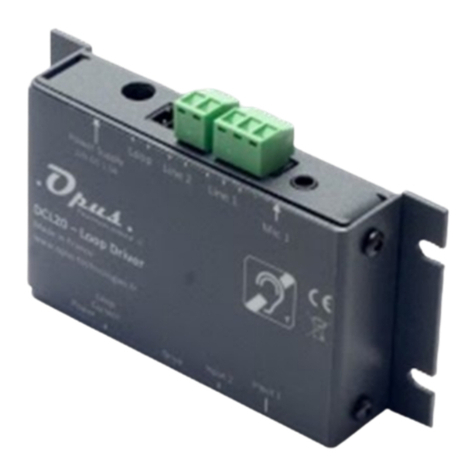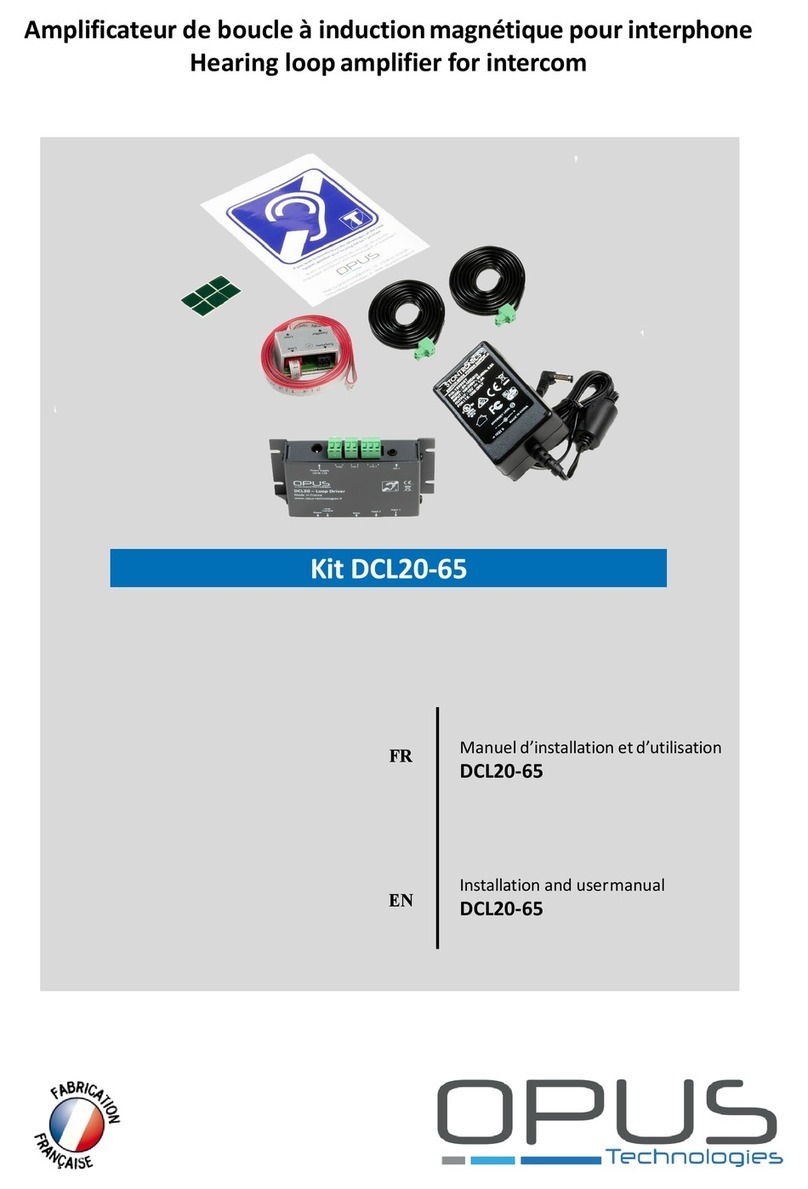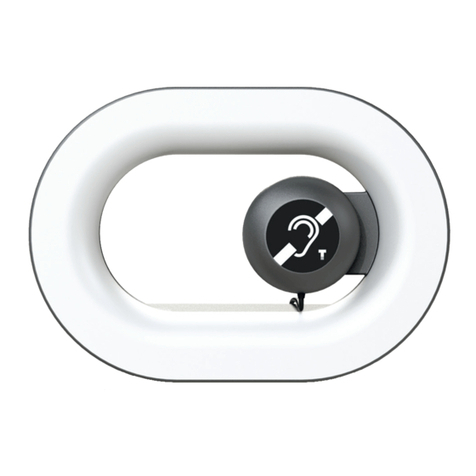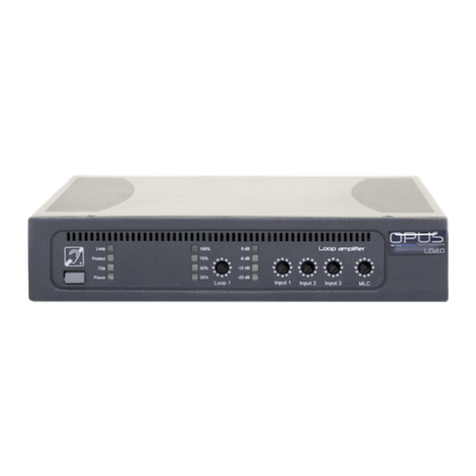
2. Loop amplifier presentation
2.1 Description
The LD range is composed of magnetic induction loop
amplifiers allowing to equip rooms for people
suffering from hearing loss.
The LD Series has been developed with strict and
rigorous specifications that allow us to offer a 5 year
warranty.The products have been designed with
options to facilitate their use and installation.
Product picture Figure1
The range of single channel amplifiers is composed of
the LD1.2, LD2.2 and LD3.2. They allow to cover
different surfaces as described below.
2.2 The product range
Opus Technologies' LD1.0, LD2.0 and LD3.0 are anew
generation of magnetic loop amplifiers, made in
France.These robust amplifiers are the most compact
on the market while offering the necessary features
(AGC, MLC, compressor, fault monitoring, etc.) to
ensure an installation in rooms from 100m² to
1000m².
•LD1.0 covers up to 250 m² -max width :10m
•LD2.0 covers up to 450 m² -max width :15m
•LD3.0 covers up to 1000 m² -max width :20m
These coverage informations are given on an
indicative basis and depend on the configuration of
the room and project constraints (presence of metal
structures, overspill, room width, etc). Not taking
these constraints may lead to an installation not
complying with the IEC-60118-4 standard
requirements.It is essential to consult aloop specialist
for your project design.Our Smartloop simulation
software will help you designing project complying
with the IEC-60118-4 norm.Contact your closest
distributor for more information.
2.3 Package contents
Upon reception of your amplifier, inspect the unit to
check if any damage have occurred during shipment.
If damages are noticed, report immediately to your
distributor and shipping company, indicating the
date of delivery, the nature of the damage, if it was
visible on the packaging before unpacking.If
possible, give the delivery note number and a
tracking number.
Package contents:
•LD1.0, LD2.0 or LD3.0 amplifier
•Power cable 1.5m, CEE 7/7 -C13 connectors
•2x 3-pin connectors
•1x 2-pin connector, output
•1x 2-pin connector, input
•A set of 3 stickers “Area adapted for the hard of
hearing people".
•Installation and user guide
•OP-R rack mounting kit (optional)
•Warranty certificate
If any pieces are missing, please contact your reseller
or the manufacturer directly.
2.4 Rack mounting kit: OP-R (optional)
OP-R contents
•2x rack mounting brackets
•2x mounting brackets
•8x mounting screws
Amplifier picture -Figure1
6
LD Series |Installation and user manual
User manual


